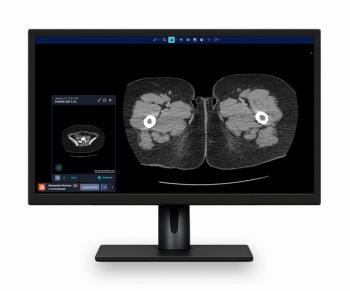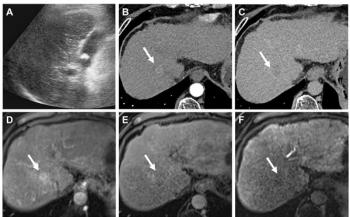
Diagnostic Imaging Europe
- Diagnostic Imaging Europe Vol 26 No 1
- Volume 26
- Issue 1
Interventional radiology finds new patients in Jehovah’s Witnesses
Radiologists from Boston Medical Center are using interventional techniques to treat bleeding Jehovah's Witness patients.
Radiologists from Boston Medical Center are using interventional techniques to treat bleeding Jehovah's Witness patients.
The Jehovah's Witness movement was established by Charles Russell in Pennsylvania in the 1870s and now has six million followers worldwide. Issues with blood transfusions were first described in the July 1945 edition of The Watchtower, the movement's official publication.
Followers believe ingestion of blood can result in loss of eternal life, eternal damnation, and excommunication from their congregation. Many also believe that individuals offering to transfuse blood are acting through the devil's influence.
Acceptable medical treatments for church members include most surgical/ interventional procedures and anesthesiologic blood conservation methods, as well as diagnostic and therapeutic procedures, synthetic oxygen therapeutics, nonblood volume expanders, pharmacologic agents that do not contain blood components or fractions such as vasoconstrictors, agents that enhance hematopoiesis, and recombinant products, said Dr. Nii-Kabu Kabutey, lead author of the Boston group's RSNA 2009 education exhibit.
Other procedures acceptable to the elders of Jehovah's Witness include apheresis, hemodialysis, plasma-derived fractions (immunoglobulins, vaccines, antivenins, albumin, cryoprecipitate), hemostatic products containing blood fractions (fibrin glue and/or sealant), and hemostatic bandages containing plasma fractions and thrombin sealants.
Many church members have problems finding a physician who will treat them in accordance with their beliefs, and they fear their beliefs will not be respected during a medical emergency. Conversely, some physicians think these beliefs are at odds with their duty to promote a patient's well-being, according to Kabutey.
Before a procedure, the Boston Medical Center team evaluates the patient's history of bleeding or previous hematologic or thrombotic disorders, plus the individual's family history in this area.
Team members then obtain a modified informed consent, aggressively treat anemia, work to minimize iatrogenic blood loss and the number of blood samples taken, and use pediatric tubes. They use various techniques to limit blood loss and reduce transfusion requirements, including meticulous hemostasis and use of closure devices to the puncture site, good manual compression at the puncture site, and reverse anticoagulation if clinically feasible.
After the procedure, further methods are used to reduce blood loss, such as close clinical follow-up, minimizing oxygen consumption, and maximizing oxygen saturation.
“Understanding the social and clinical challenges in the treatment of Jehovah's Witness patients is essential to provide quality care,” Kabutey said. “Proper preprocedural planning can improve the outcome of interventional procedures on bleeding patients.”
One of the group's success stories was a 57-year-old female Jehovah's Witness with an acute onset of brightred blood per rectum. A colonoscopy did not reveal any abnormal pathology. Embolization of the right colonic artery was successful, and the patient did not require a transfusion or surgical intervention.
In another case, a 33-year-old female JW presented acutely with postpartum hemorrhage. She refused a transfusion and wanted to avoid a hysterectomy. Bilateral embolization of uterine arteries was accomplished with Gelfoam. Her bleeding stopped after the procedure, and she did not require a hysterectomy.
Articles in this issue
almost 15 years ago
Postprocedural complication of vertebroplastyalmost 16 years ago
First Eastern-based ECR president puts renewed emphasis on trainingalmost 16 years ago
Clinical context in reports helps to reduce errorsalmost 16 years ago
Image-guided spine intervention leads to back pain reliefalmost 16 years ago
Hospital finds outsourced data archive simple, cost-effectivealmost 16 years ago
Breathing new life into resuscitation trainingalmost 16 years ago
Europe stands firm as U.S. healthcare sector faltersalmost 16 years ago
Multislice SPECT/CT gains wider clinical acceptancealmost 16 years ago
Studies show how breast ultrasound reduces unnecessary biopsiesalmost 16 years ago
Ecstatic German informatics group wins top award for researchersNewsletter
Stay at the forefront of radiology with the Diagnostic Imaging newsletter, delivering the latest news, clinical insights, and imaging advancements for today’s radiologists.




























